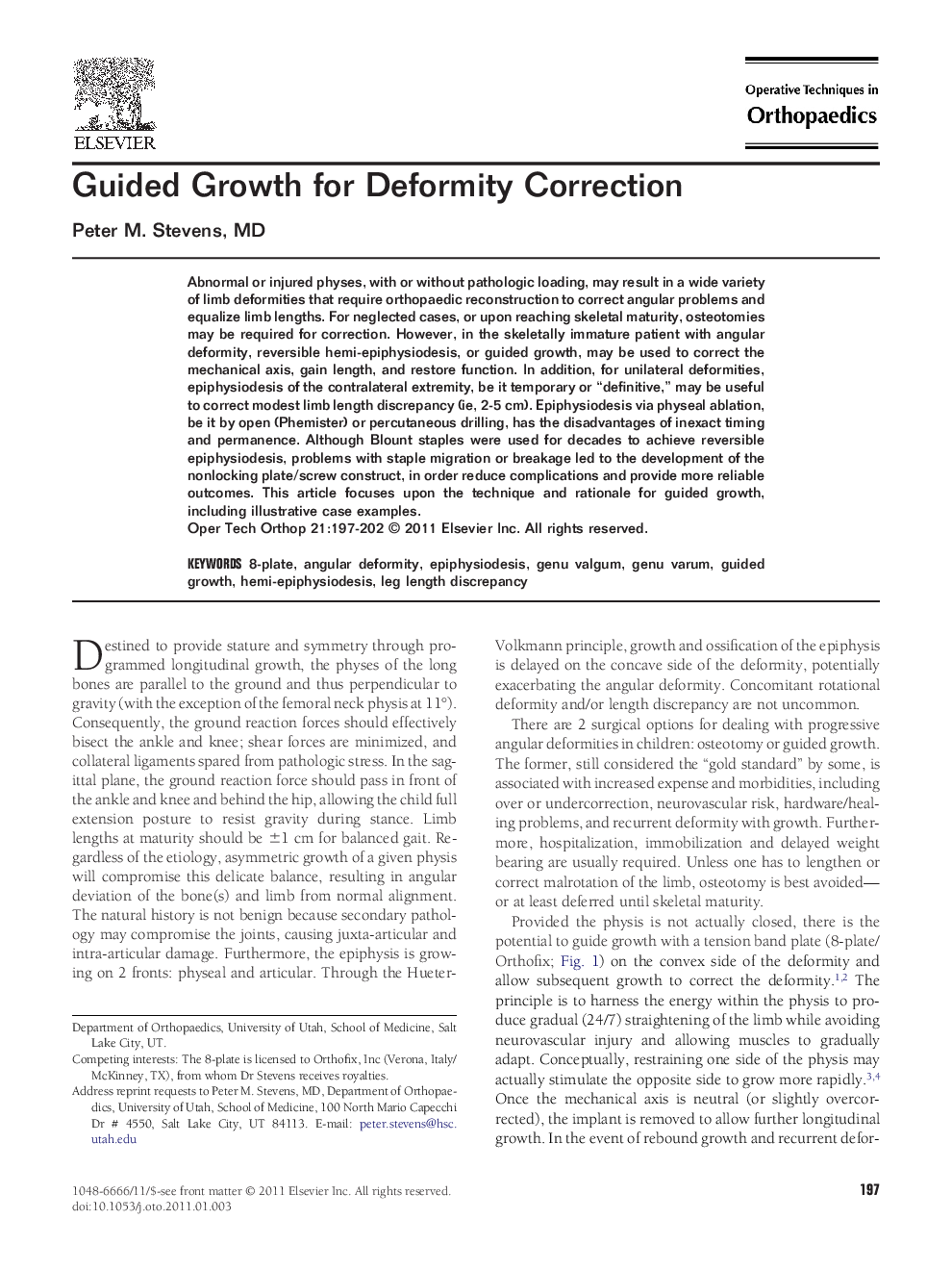| Article ID | Journal | Published Year | Pages | File Type |
|---|---|---|---|---|
| 4078948 | Operative Techniques in Orthopaedics | 2011 | 6 Pages |
Abnormal or injured physes, with or without pathologic loading, may result in a wide variety of limb deformities that require orthopaedic reconstruction to correct angular problems and equalize limb lengths. For neglected cases, or upon reaching skeletal maturity, osteotomies may be required for correction. However, in the skeletally immature patient with angular deformity, reversible hemi-epiphysiodesis, or guided growth, may be used to correct the mechanical axis, gain length, and restore function. In addition, for unilateral deformities, epiphysiodesis of the contralateral extremity, be it temporary or “definitive,” may be useful to correct modest limb length discrepancy (ie, 2-5 cm). Epiphysiodesis via physeal ablation, be it by open (Phemister) or percutaneous drilling, has the disadvantages of inexact timing and permanence. Although Blount staples were used for decades to achieve reversible epiphysiodesis, problems with staple migration or breakage led to the development of the nonlocking plate/screw construct, in order reduce complications and provide more reliable outcomes. This article focuses upon the technique and rationale for guided growth, including illustrative case examples.
